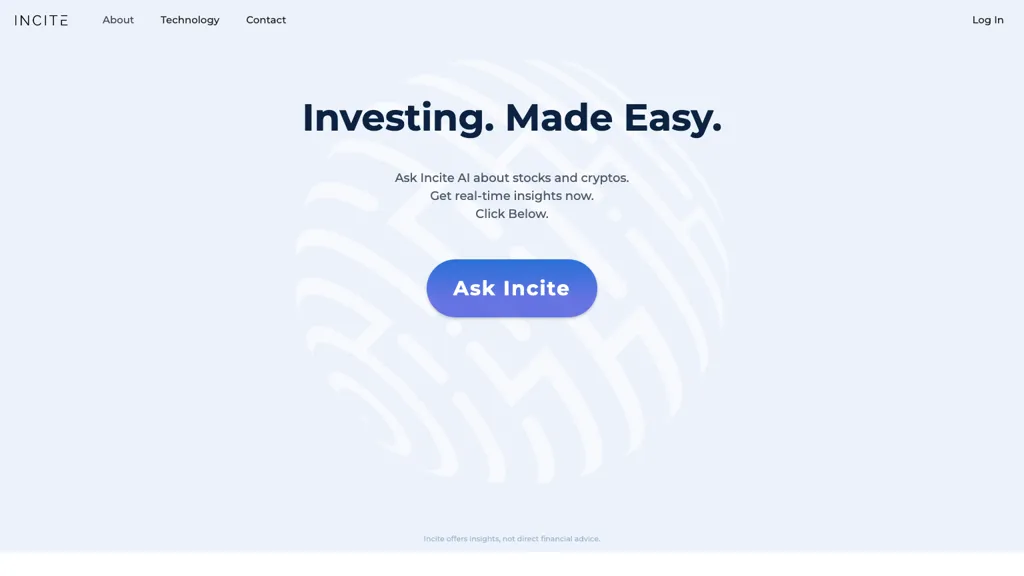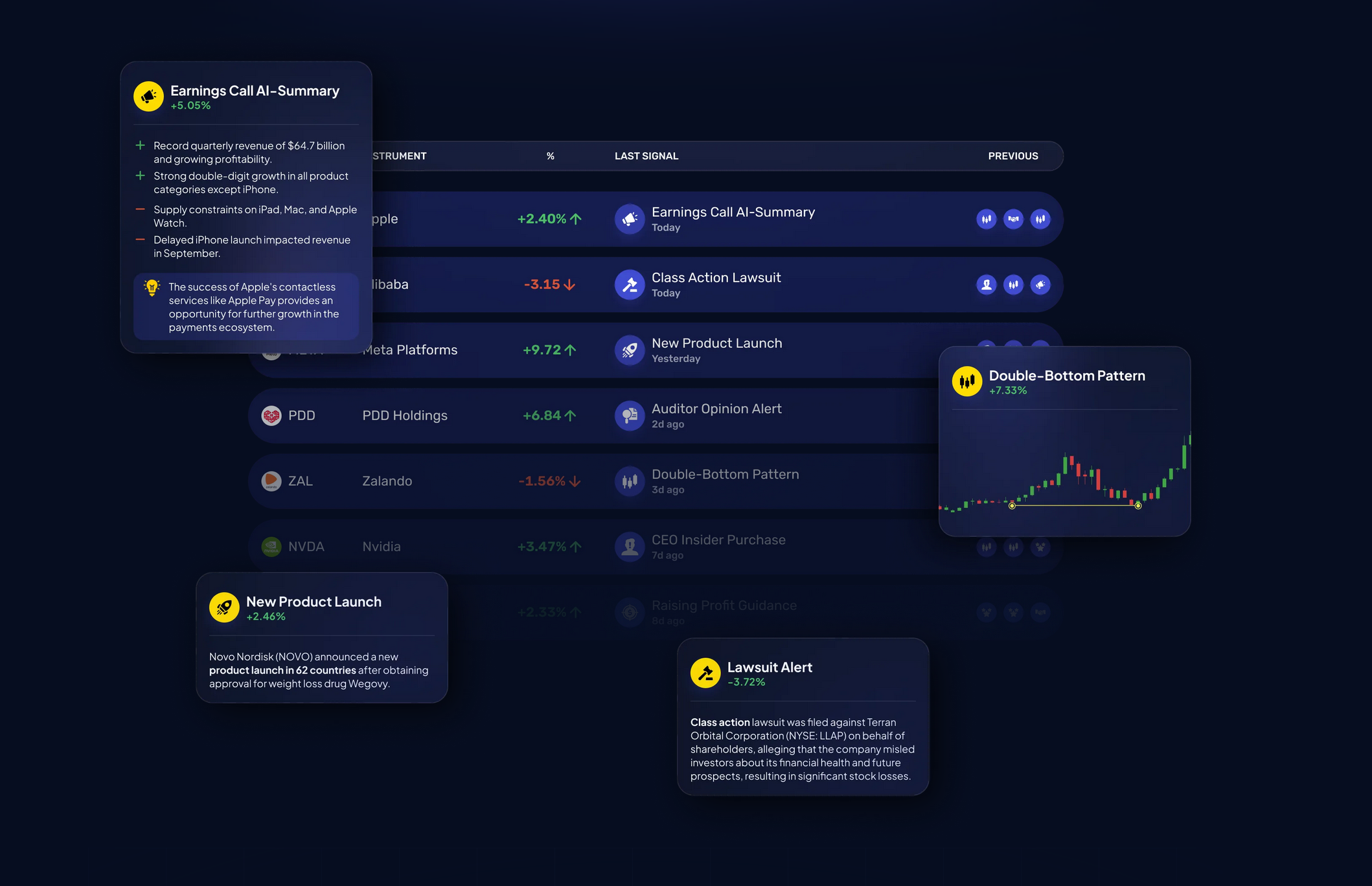20 Free Reasons For Deciding On AI Stock Trading Sites
20 Free Reasons For Deciding On AI Stock Trading Sites
Blog Article
Top 10 Tips On How To Assess The Strategy Customization Of Ai Trading Platforms
The ability to customize the trading platform according to your trading objectives as well as your tolerance for risk and current market conditions is an essential feature of AI-based stock prediction and analysis trading platforms. A platform that offers many customization options will improve your trading performance. Here are 10 top strategies for evaluating the customizable options offered by these platforms.
1. Evaluate Pre-Built Strategy Templates
A variety of templates: See whether the platform has an array of pre-designed strategies to suit different styles of trading (e.g. swing trading, day trading, long-term investment).
The ease of use is a good indicator.
Performance history: Verify whether the platform offers historical performance data for pre-built strategies.
2. Assessment Customized Strategy
Drag-and-drop: Search for platforms which offer drag-anddrop interfaces when creating custom strategies.
Coding options: Find out whether the platform supports customized programming (e.g., Python, R, or proprietary scripting languages) for advanced users.
Flexibility - Ensure that the platform you select allows you to establish rules for entry and exit, parameters to manage risk, as well as other key aspects of your strategy.
3. Check for Backtesting Capabilities
Historical data. Check if your platform can provide sufficient historical data in order to backtest your strategy.
Modifiable parameters: Make sure you have the ability to alter parameters (e.g. timespans, timeframes or indicators) when backtesting.
Performance metrics: Make sure the platform provides detailed metrics of performance (e.g. Win rate Sharpe Ratio, Drawdown) when testing strategies.
4. Evaluate Real-Time Strategy Testing
Paper trading Try out strategies in real-time using paper trading or simulation.
Live testing: Find out if you are able to test your strategies in real market conditions with small amounts of capital.
Real-time adjustments: You should find out if your plan can be adjusted in real-time according to the market conditions.
5. Assessment of Integration based on technical Indicators
Verify if there's an indicator library.
Custom indicators: Ensure that you have the ability to import or develop custom indicators for your strategies.
Combinations of indicators: Check whether the platform permits several indicators to make more complex strategies.
6. Check for Risk Management Tools
Stop-loss/take-profit: Ensure the platform allows you to set stop-loss and take-profit levels within your strategies.
Position sizing - Check for any rules you could follow (e.g. a fixed amount or the percentage of your portfolio) to control risk.
Risk-reward rate: Verify whether the platform permits setting risk-reward rates specific to specific strategies or trades.
7. Evaluate Multi-Asset Strategy Support
Asset classes: Make sure that the platform can provide strategies for a variety of asset classes (e.g. stocks, ETFs or options, forex).
Strategies for cross-assets: Determine if you're able to design strategies that incorporate different asset classes.
Market coverage - Verify that the platform is covering the markets that you're interested (e.g. US and international markets, copyright and more.).
8. Review Automation & Execution
Automated trading. Make sure the platform supports automated execution based on predefined strategies.
Order types: Check whether the platform can support different order types (e.g. market, limit stop, limit) for strategy execution.
Latency: Determine if the platform is able to perform trades fast, especially for trading strategies that use high-frequency.
9. Make sure you are using tools to optimize your strategy
Optimization of parameters - Make sure that the platform includes tools to optimize your strategy's parameters.
Machine learning integration Check to see if your platform incorporates machine learning in order to enhance and improve strategies.
Scenario evaluation: Determine whether your platform is capable of testing different strategies in various market conditions, including bearish, bullish or volatile.
Review Community Support and User Feedback
The feedback of users is crucial to assess the performance of an application.
Community forums Find out if there's an active user community who are willing to share their strategies and ideas.
Support resources: Ensure that the platform provides tutorials, webinars or documentation that will help users develop and optimize their strategies.
Bonus Tips
Trial period: Experience the features of the platform that allow customization by using a demo or trial.
Scalability: Ensure the platform is able to handle more complex strategies as your trading evolves.
Customer support: Verify if the platform offers support for any strategy-related questions.
Follow these tips to assess the AI platforms' stock prediction and analysis capacity to tailor strategies. When you do this, you will ensure that you select a platform which aligns with your goals for trading and enables you to create and improve your personal strategies. A platform with robust customization features can enable you to be flexible to changing market conditions and improve the efficiency of your trading. Have a look at the top rated investment ai info for more info including incite, incite, AI stock market, ai investing, investing ai, AI stock trading, ai trading tools, investing ai, market ai, AI stock and more.
Top 10 Tips For Evaluating The Risk Management Of AI stock Prediction And Analysis Of Trading Platforms
Risk management is an important aspect of every AI trading platform. It assists in protecting your investment while minimizing the risk of losses. A platform with strong risk management tools will aid you navigate the volatile markets and make informed choices. Here are the 10 best ways to evaluate these platforms' risk management capabilities:
1. Review of Take-Profit and Stop-Loss Features
Customizable levels: Ensure your platform permits you to define take-profit and stop-loss levels for specific strategies or trades.
Make sure that your platform supports trailing stops that adjusts itself automatically when the market shifts towards you.
You should check whether there are stop-loss strategies that guarantee your position to be closed at the agreed rate, even if markets fluctuate.
2. Assess Position Sizing Tools
Fixed amount. Make sure you can define the size of your positions in terms of a fixed dollar amount.
Percentage of your portfolio: See whether you can establish size limits in percentages of your portfolio total to reduce risk proportionally.
Risk-reward Ratio: Make sure that the platform supports setting risk-reward levels for each individual.
3. Check for Diversification Support
Multi-asset trading: Make sure the platform permits you to trade across a variety of asset classes, such as ETFs, stocks and options. This can help you diversify your portfolio.
Sector allocation: Determine whether the platform provides tools for monitoring and managing exposure to sectors.
Diversification of geographic areas. Make sure the platform can trade internationally that spread geographical risk.
4. Examine Margin and Leverage Controls
Margin requirements. Be sure to know the requirements for margin prior to trading.
Examine the platform to determine whether it permits you to limit the leverage you use to lower the risk.
Margin calls: Ensure that you get timely notifications from the platform to prevent account liquidation.
5. Assess the risk Analytics and Reporting
Risk metrics - Make sure that your platform has important risk indicators like the Sharpe ratio (or Value at Risk (VaR)) or drawdown (or value of portfolio).
Scenario Analysis: Determine the platform you use allows the capability to simulate different market scenarios to assess possible risks.
Performance reports: Determine whether you are able to obtain comprehensive reports on performance from the platform. These reports include risk-adjusted performance results.
6. Check for Real-Time Risk Monitoring
Portfolio monitoring: Ensure that the platform allows real-time monitoring of the risk exposure to your portfolio.
Notifications and alerts. Check if the platform offers real-time notification of risk-related events.
Check the risk dashboards. If you're looking to see a complete picture of your risks, make sure that they're configurable.
7. How do you evaluate the results of Stress Testing and Backtesting
Stress testing: Check that the platform will allow you to stress-test your portfolios or strategies during extreme market conditions.
Backtesting: Check whether the platform allows backtesting strategies based on previous data to evaluate performance and risk.
Monte Carlo simulators: Verify that the software is using Monte Carlo to simulate a number of possible outcomes to allow you to determine the the risk.
8. Assess Compliance with Risk Management Regulations
Check for regulatory compliance: Make sure that the platform adheres to the relevant regulations for risk management (e.g. MiFID II, Reg T, in the U.S.).
Best execution : Check to see if your platform follows the most efficient execution methods. This ensures that trades are executed at the most efficient price, minimising slippage.
Transparency: Check whether the platform offers clear and transparent risk disclosures.
9. Check for user-controlled risk parameters
Custom Risk Rules: Ensure that you are able to define your own rules for managing risk (e.g. an amount that is the maximum loss per day, a certain amount of tradeable position).
Automated risk management: Make sure that the platform implements the risk management guidelines automatically, based on the pre-defined guidelines.
Manual overrides: Check to see if your platform lets you manually override automated risk controls.
Study Case Studies, User Feedback Review Case Studies, User Feedback Case Studies
Review by users: Conduct studies to evaluate the platform's effectiveness for risk management.
Testimonials and case studies The case studies and testimonials will demonstrate the risk management capabilities of the platform.
Community forums: See if a platform has a community of users who are willing to share their strategies and suggestions for managing risk.
Bonus Tips:
Trial period: Take advantage of a demo free or trial period to try the risk management capabilities of the platform in realistic scenarios.
Support for customers: Make sure whether the platform offers the best support to queries or concerns related to the management of risk.
Educational resources - Check to see whether the platform offers educational resources and tutorials about best practices in risk management.
These guidelines will allow you to determine the risk management capabilities of AI stock-predicting/analyzing trading platforms. In this way, you'll be able to choose a platform which protects your capital and limits potential losses. Robust risk management tools are crucial to navigate unstable markets and achieving long-term trading success. Check out the best read more on best AI stocks to buy now for blog info including AI stock predictions, stocks ai, best AI stock prediction, investing with ai, ai in stock market, investing with ai, best ai penny stocks, best AI stock prediction, best AI stocks to buy now, investing with ai and more.